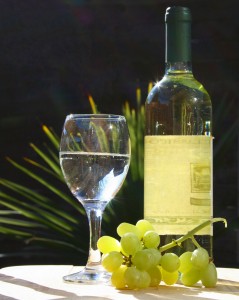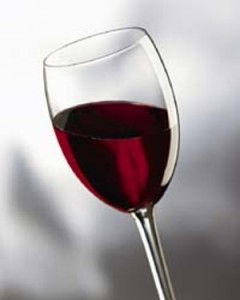We all know that one of the true joys of France is being able to sample the wines.. and bring a few back! However, if you’re like me you stand looking at the umpteen varities on the supermarket shelf & haven’t got a clue where to start! Here’s a beginners guide;
Alsace-1 Beaujolais-2 Bordeaux-3 Burgundy-4
Cahors-5 Chablis- Champagne-7 Côtes du Rhone-8
Côtes de Jura-9 Jurançon-10 Languedoc-11 Pouilly/Sancerre-12
Provence -13 Rousillon-14 Savoie-15 Val de Loire–16
Alsace
The distinctive whites of Alsace are rich in aroma and full of ripe flavour. Reisling, Muscat, Gewurtztraminer and Pinot Gris are generally considered the finest, but good wines are also produced from Sylvare and Pinot Blanc grapes. The region’s only red grape is Pinot Noir which can also produce excellent wines.
Beaujolais
Famous for fresh, fruit flavoured, Beaujolais Nouveau, released on the third Thursday of November after the harvest. Of conventional Beaujolais wines Beaujolais AC is the best appellation. The finest examples are Brouilly, Chenas, Chiroubles, Cote de Brouilly, Fleurie, Julienas, Morgon, Moulin-a-Vent, Regnie and St-Amoura.
Bordeaux
This world famous region is home to hundreds of excellent red and white wines.
The Reds
Cabernet Sauvignon, Cabinet Franc, Merlot and Pinot Verdot grapes produce honeyed wines with blackcurrent and cedarwood perfume – the most important areas are Haut-Medoc, Pessac-Leognan, Graves, St-Emilion and Pomerol.
The Whites
Little known, but accounting a fifth of all production, some sublime examples using Sauvignon Blanc and Semillion grapes – usually blended together. New technology has transformed production of dry wines, including Bordeaux-Blanc, Entre-Deux-Mers and Pessac-leognan. The most famous Bordeaux whites are sweet- especially Sauternes and Barsac.
Burgundy
Covering the vast tract of Eastern France from Auxerre to Lyon. The Pinot Noir grape produces an incredible variety of flavours. In the south the Beaujolais grape produces juicy, fruit flavoured, strawberry and plum flavours. Top reds come from Cote d¹Or, home of the world famous Grand Cru vineyards such as Clos de Vougeot and Chambertin. Newer, but no less fascinating, are the Hautes Cotes and Chablis. White Burgandy is renowned as the world¹s finest white wine. The best are totally dry but with the richness of honey and hazelnut, melted butter and sprinkled spice – Aloxe-Corton, Meursault, Puligny-Montrachet and Chassagne-Montrachet. Other styles include the steely Chablis, Rully and montagny.
One of the great country wines of South-West France made from Malbec, Merlot, Tannat and Jarancon Noir grapes. Dark and highly tannic, Cahors requires a lenghty bottle age to soften.
Chablis
The northernest outpost of Burgundy. The best Chablis is white and dry with a light and unassertive fruit flavour. Look out for Chablis Grand Cru from Bougros, Les Preuses, Vaudesir, Grenouilles, Valmur, Les Clos and Les Blanchots. These wines should ideally be drunk when 1-2 years old, although some of the best can improve from 3-5 years.
Champagne
Moet et Chandon remains one of the most prestigious houses, best known for vintage Dom Perignon. Krug Grand Cuvee is generally light and elegant with a faint aroma of vanilla. Roederer Cristal is a big, creamy, classic champagne. Laurent Perrier’s non-vintage is generally one of the best buys. Try Bollinger Cuvee Tradition for a classic, robust and complex champagne to rememeber.
Côtes du Rhone
Over 90% of Rhone Valley wines are either red or rose. Juicy, spicy and easy to drink. Cotes du Rhone AC should be drunk within two years.
Côtes de Jura
The local white Sauvignon grape makes strong tasting whites, and Chardonnay is used for some good dry whites. Good reds and roses from Pinot Noir. Best producers include Arlay, Bourdy, Grea and the Puplin co-op.
Historic sweet white from the Western Pyrenees. Jurancon Sec can be crisp, dry and refreshing. Best producers include Cauhape, Clos Cancaillau, Clos Uroulat, Cru Lamouroux and Guirouih.
Languedoc
Large area running from Nimes to the Spanish border, now turning out some exciting reds, most notably Corbieres and Minervois and some new Cabernets, Merlots and Syrahs.
Pouilly & Sancerre
Pouilly-Fume has a strong pungent smell reminiscent of gunflint – great potential but not always good value. Sancrerres from Bue, Chavignol, Verdigny or Menetreol provide the perfect expression of the brightness of the Sauvignon grape.
Provence
France’s oldest wine region is enjoying a revival. There are four small, high quality ACs – Bandol, Bellet, Cassis and Pellit. The large Cotes de Provence is mainly given over to the production of reds and rosés which are fruit flavoured but should be drunk young
Rousillon
A wide range of reasonably priced mainly red, wines. Try the fresh, fruit flaoured Vins-de-Pays and raisin-flavoured Vins Doux Naturels. Cotes du Roussillon, to the south of Perpignan, provides some of France’s best value reds.
Savoie
High Alpine vineyards produce fresh, snappy whites with lots of taste; from feather-light, sparkling Seyssel Mousseux – sharp and peppery, to Crepy – a light acidic wine which should be drunk as young as possible.
Val de Loire
Cutting right through the heart of France, the Loire Valley is home to many of the world’s most famous wines. The dazzling whites of Sancerre and Pouilly-Fume are from the upper reaches. The Tourraine region makes a good Sauvignon Blanc. The best reds are from Chinon and Bourgueuil. For good sparkling wine try Vouvray and Montlouis, Anjou is famous for its rose but its best wines are white – such as the very dry Chenin from Savennieres




Comments